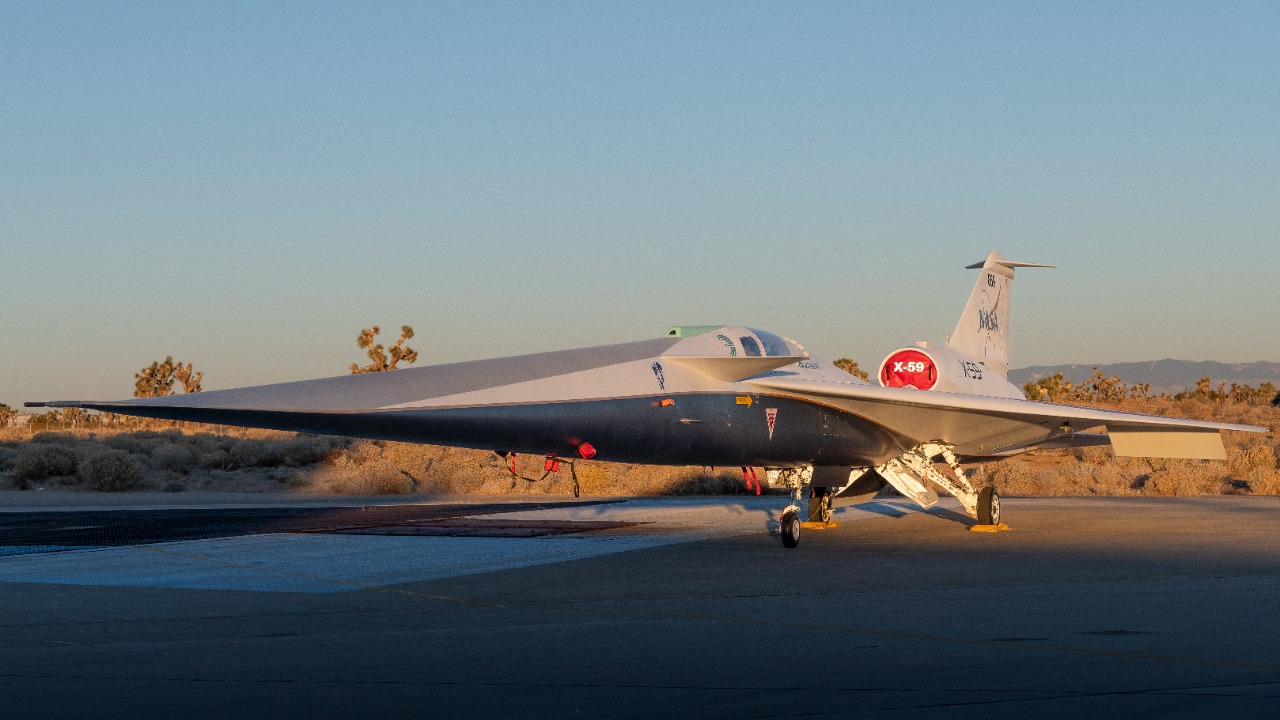
On October 29, 2025, NASA’s X-59 quiet supersonic jet made a historic first flight, soaring over the California desert. This maiden voyage, a significant milestone for the aircraft designed to minimize sonic booms, could potentially halve air travel time, revolutionizing commercial aviation.
Project Background and Development
The X-59, a quiet supersonic aircraft, is the result of a collaboration between NASA and Lockheed Martin. The project was conceived to address the challenges of sonic booms in overland flight. The aircraft’s design features are aimed at producing a softer “thump” instead of a traditional sonic boom during supersonic speeds. This is a key component of NASA’s Quesst mission, which seeks to enable future sustainable supersonic travel over land.
Pre-Flight Preparations
As of August 20, 2025, preparations for the historic first flight of NASA’s X-59 quiet supersonic jet were underway. These included ground tests and systems checks at Lockheed Martin’s Skunk Works facility. The aircraft integrates advanced technologies like an elongated nose and specialized shaping to reduce noise during supersonic flight. Safety protocols and regulatory approvals for the California desert test site were emphasized in the timeline leading up to the maiden flight.
The Maiden Flight Details
The X-59’s first flight on October 29, 2025, took off from Edwards Air Force Base in the California desert. The initial low-speed maneuvers were part of the flight path over the California desert, focusing on data collection for sonic boom measurements during the test. An unofficial first test flight was conducted on October 28, 2025, as a preliminary evaluation before full supersonic trials.
Technical Innovations of the X-59
The X-59 is engineered to fly at Mach 1.4 while producing sonic thumps below 75 decibels to comply with noise regulations. The aircraft’s unique aerodynamics include a 99.7-foot wingspan and a lack of a forward cockpit window, which is replaced by a camera system for visibility. The propulsion systems, including the single General Electric F414 engine, support efficient supersonic cruise at 55,000 feet altitude.
Potential Impact on Air Travel
The success of the X-59 could halve air travel time for transcontinental routes, such as reducing New York to Los Angeles flights from five hours to under three. This could have significant implications for commercial aviation, including the possibility of lifting the U.S. ban on overland supersonic flights established in 1973. Quieter operations could enable more efficient global connectivity without disturbing communities below flight paths, offering environmental and economic benefits.
Next Steps and Future Testing
Community overflights are planned for 2026 to gather public feedback on the X-59’s noise levels as part of the Quesst mission. Subsequent supersonic test flights are scheduled after the October 29, 2025, maiden voyage to validate data for FAA certification. The long-term goals include handing over findings to industry partners by 2027 to inform next-generation supersonic passenger aircraft.
More from MorningOverview